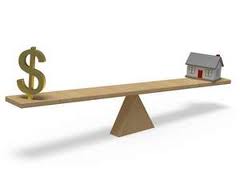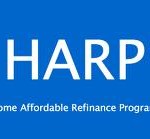HARP – Special Affordable Refinance Program
|
Has your home LOST VALUE?
THIS IS YOUR BAILOUT!
The funds the Obama Administration has made available for this program come from YOUR tax dollars. Take advantage of this program while it is still available!
|
Do you have a Fannie Mae or Freddie Mac loan and cannot refinance due to declining property values or a loss of income?
Would you like to reduce the cost of your monthly mortgage payments or move into a stable fixed rate mortgage? We may be able to assist through the Homeowner Affordability and Stability Plan.
A special
HARP Affordable Program, which is designed to help up to 9 million American families
refinance their loans to a payment that is affordable now, and into the future. One of the initiatives in this program is aimed at helping responsible homeowners “refinance” their loans to take advantage of historically low interest rates.
Here are some common Questions and Answers about the Refinancing Initiative in the program.
Who is eligible?
You may be eligible, and we can assist you if:
- You own and currently occupy a one- to four-unit home.
- Your mortgage is owned or controlled by Fannie Mae or Freddie Mac.
- You are current on your mortgage payments.
- The amount you owe on your first mortgage is about the same or slightly less than the current value of your house.
- Your first mortgage is 105% or less
- And, you have a stable income sufficient to support the new mortgage payments.
How do I know if my loan is owned or controlled by Fannie Mae or Freddie Mac?
Simply call or email me. I’ll help you determine if your mortgage is backed by Fannie Mae or Freddie Mac.
If I am delinquent on my mortgage, do I still qualify for the Refinance Initiative?
No. But the good news is, you may qualify for the Modification Initiative. Contact the company you currently make payment at to discuss your situation and review your options.
I have both a first and a second mortgage. Do I still qualify to refinance under Making Home Affordable?
Maybe. As long as the amount due on the first mortgage is less than 125% of the value of the property, borrowers with more than one mortgage may be eligible for the Refinance Initiative.
Will refinancing lower my payments?
That depends. If your interest rate is much higher than the current market rate, you would likely see an immediate reduction in your payment amount.
However, lowering your monthly payments isn’t the only criteria to think about. If you have an adjustable mortgage (ARM) or are paying interest only on your mortgage, you may not see your payment go down. BUT… you will be able to avoid future mortgage payment increases and may save a great deal over the life of the loan.
What are the terms of the refinance and what will the interest rate be?
All loans refinanced under the plan will have a 30- or 15- year term with a fixed interest rate. The interest rate will be based on market rates at the time of the refinance. Currently, interest rates are at historical lows, which makes this a good time to examine your refinancing options.
Will refinancing reduce the amount that I owe on my loan?
No. Refinancing will not reduce the principal amount you owe. However, refinancing should save you money by reducing the amount of interest that you repay over the life of the loan.
Can I get cash out to pay other debts?
No. Only transaction costs, such as the cost of an appraisal or title report may be included in the refinanced amount.
How do I apply for the Special HARP Refinance Initiative in MN or WI?
Call 651-70-LOAN1 (651-705-6261) or E-mail us today to discuss your specific situation and to examine your options. If this plan is right for you, we can begin working on your refinance immediately. You can help us help you by filling out out ONLINE APPLICATION. Remember, we lend in MN and WI only.
As part of the discussion, we may need to look at the following information:
- Recent pay stubs to help determine your gross (before tax) household income.
- Your most recent income tax return.
- Information about any second mortgage on your house.
- Account balances and minimum monthly payments due on all of your credit cards.
- Account balances and monthly payments on all other debts, such as student loans and car loans.
As always, if you have any questions or would like to discuss how this may specifically impact you, I’d be happy to sit down with you. Just call or E-Mail me to set up an appointment.
If you are a homeowner who is current on your mortgage payments but unable to refinance to a lower interest rate because your home value has decreased, you may be able to refinance.
Do I qualify for an Affordable Refinance? Answer these questions:
- Is your home your primary residence?
- Do you have a Fannie Mae or Freddie Mac loan? If you don’t know contact:
- Are you current on your mortgage payments?
- “Current” means that you haven’t been more than 30-days late on your mortgage payment in the last 12 months.
- Do you believe that the amount you owe on your first mortgage is about the same or less than the current value of your house?








